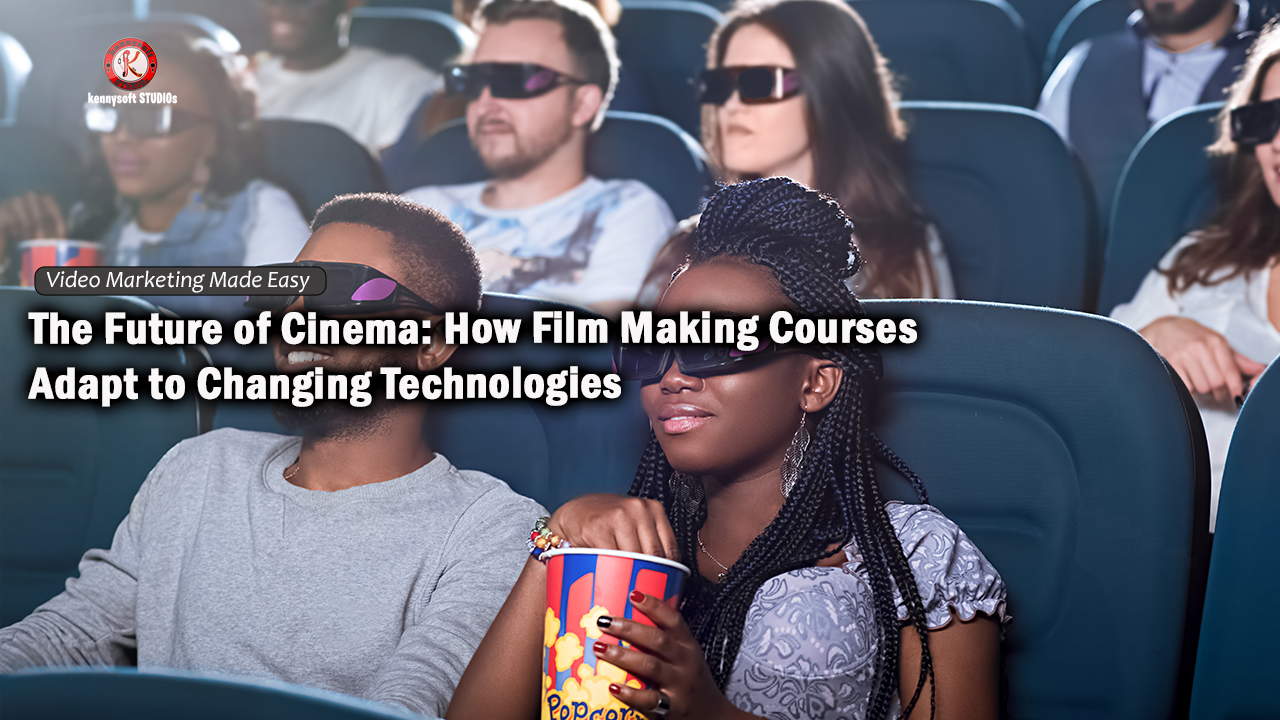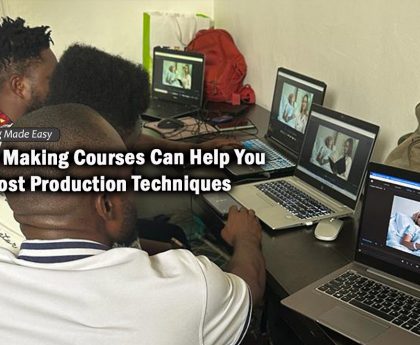
The art of cinema is continually evolving, influenced by advancements in technology that have redefined the way films are made, distributed, and consumed. For aspiring filmmakers, keeping pace with these changes is essential to staying competitive in an industry that thrives on innovation. This is where film making courses come in, playing a crucial role in equipping the next generation of filmmakers with the skills and knowledge they need to succeed in a rapidly changing space.
The art and craft of filmmaking are undergoing a profound transformation looking at rapid technological advancement. As a result, film schools and courses around the world are reimagining their curricula to prepare students for the ever-changing cinema industry.
In this article, we’ll explore how film making courses are adapting to emerging technologies and preparing filmmakers for the future of cinema.
- 1. The Shift to Digital Filmmaking
- 2. Virtual Production and Real-Time Rendering
- 3. Immersive Storytelling: VR and AR
- 4. Artificial Intelligence (AI) in Filmmaking
- 5. Sustainable Filmmaking Practices
- 6. Drone Cinematography
- 7. Streaming and Online Distribution
- 8. Global Collaboration Through Cloud-Based Workflows
- 9. Balancing Technology with Timeless Skills
- Conclusion
1. The Shift to Digital Filmmaking
In the past two decades, the film industry has largely transitioned from traditional celluloid to digital formats. Digital cameras, editing software, and projection methods have become the norm, allowing filmmakers to experiment with new techniques and workflows.
Film making courses now focus heavily on digital filmmaking, teaching students how to use the latest digital cameras, such as RED, ARRI Alexa, and Blackmagic, as well as editing software like Adobe Premiere Pro, DaVinci Resolve, and Final Cut Pro. This shift has democratized the filmmaking process, making it more accessible to individuals without huge budgets.
2. Virtual Production and Real-Time Rendering
The line between production and post-production is blurring, thanks to technologies like LED walls and real-time rendering engines. Filmmaking courses are adapting by:
- Integrating Game Engines: Many programs now teach Unreal Engine and Unity, not just for VFX but for on-set previsualization and virtual production.
- Virtual Set Design: Students learn to create and manipulate digital environments in real-time during shooting.
- Motion Capture: Courses cover both the technical and performance aspects of mocap for CGI characters.
3. Immersive Storytelling: VR and AR
As virtual and augmented reality technologies mature, filmmaking courses are expanding to include these new mediums:
- 360-Degree Filmmaking: Students learn the unique challenges of directing attention and maintaining continuity in spherical video.
- Interactive Narratives: Courses explore non-linear storytelling and user interaction in immersive environments.
- Spatial Audio: Programs teach the intricacies of sound design for 3D spaces.
4. Artificial Intelligence (AI) in Filmmaking
AI is making its mark on the film industry, particularly in areas like scriptwriting, editing, and even casting. AI-powered tools can analyze scripts for market potential, suggest edits, and even automate some aspects of the filmmaking process, such as scene generation and sound design.
Film making courses are beginning to explore how AI can be used as a tool in the creative process. For instance, students may learn how to use AI to enhance workflows, analyze audience preferences, or generate visual effects with AI-driven software. Understanding how to leverage AI will be a key skill for future filmmakers.
5. Sustainable Filmmaking Practices
As the industry becomes more environmentally conscious, filmmaking courses are incorporating sustainable practices:
- Green Production Techniques: Students learn methods to reduce the carbon footprint of film productions.
- Virtual Scouting: Courses teach how to use technology to minimize travel during pre-production.
- Energy-Efficient Equipment: Programs emphasize the use of LED lighting and other energy-saving technologies.
6. Drone Cinematography
Drones have revolutionized cinematography by making aerial shots more affordable and accessible. What was once only achievable with expensive helicopter rigs is now possible with lightweight drones that can capture stunning footage from any angle.
Film making courses now include drone operation and cinematography in their curriculum, teaching students how to plan and execute aerial shots safely and creatively. This new skill set allows filmmakers to add dramatic perspectives and dynamic movement to their storytelling, elevating the production value of their films.
7. Streaming and Online Distribution
The way films are distributed and consumed has shifted dramatically with the rise of streaming platforms like Netflix, Amazon Prime, and Disney+. Traditional theatrical releases are no longer the only option for filmmakers; online distribution offers an alternative that allows filmmakers to reach global audiences instantly.
With the rise of streaming platforms and changes in audience viewing habits, filmmaking courses are addressing new distribution realities:
- Multi-Platform Content Creation: Students learn to create content optimized for various screens and platforms.
- Social Media Integration: Courses cover strategies for marketing and distributing films through social channels.
- Data-Driven Decision Making: Programs teach how to use analytics to inform creative and marketing decisions.
8. Global Collaboration Through Cloud-Based Workflows
Advancements in cloud-based technology have made it possible for filmmakers to collaborate remotely, no matter where they are in the world. Cloud-based editing, file sharing, and production management tools allow teams to work together seamlessly, whether they’re on different continents or just across town.
Film making courses are now training students to use these cloud-based tools, preparing them for a future where remote collaboration is likely to become even more common. This opens up opportunities for filmmakers to work with diverse teams and gain international experience without the need for constant travel.
9. Balancing Technology with Timeless Skills
While embracing new technologies, filmmaking courses continue to emphasize fundamental skills:
- Storytelling: The core of any film program remains the art of crafting compelling narratives.
- Visual Composition: Despite technological changes, the principles of framing and visual storytelling remain crucial.
- Actor Direction: Courses continue to teach the nuances of working with performers to bring characters to life.
Looking Ahead: With Kennysoft Film Academy the Future is Now
The future of filmmaking isn’t just about technology—it’s about how we use these tools to tell better stories. As filmmaker Ava DuVernay once said, “The tools will change, but the truth of the story is what will always matter.” At Kennysoft Film Academy our educational programs ensure that the magic of cinema will continue to captivate audiences in new and exciting ways for years to come.
Conclusion
Film making courses are constantly evolving to stay ahead of new trends and technologies. By providing students with hands-on experience in emerging tools like VR, AI, and drone cinematography, these programs ensure that graduates are equipped to meet the demands of the modern film industry. The ability to adapt to technological changes will be crucial for filmmakers in the years to come.
The future of cinema is exciting and full of possibilities, thanks to rapid advancements in technology. Film making courses are rising to the challenge by updating their curriculums to ensure that students are well-prepared for this dynamic industry. By mastering the latest tools and techniques, aspiring filmmakers can unlock new creative opportunities and carve out successful careers in the evolving world of film.






